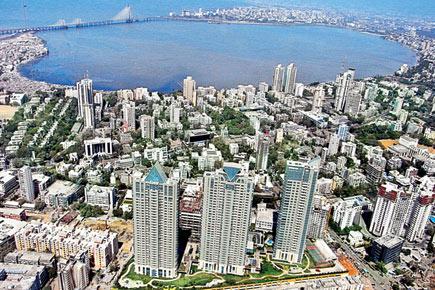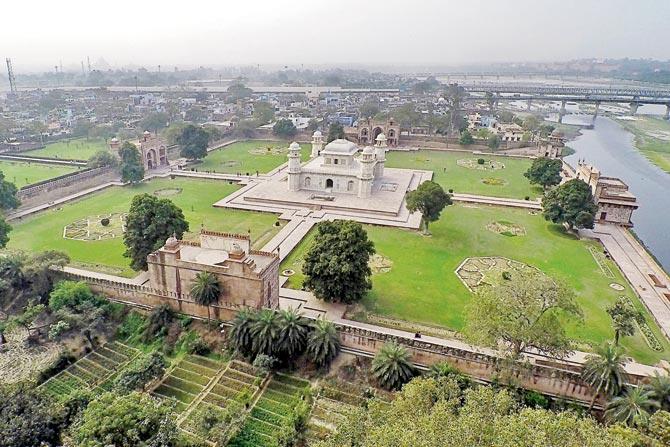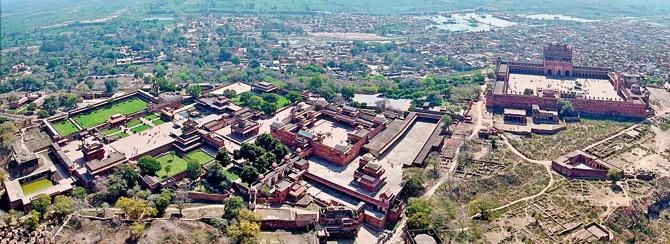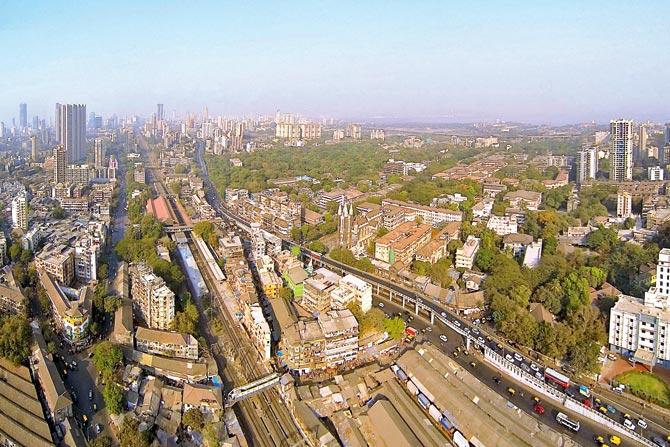Drones are such a drone. The country's only professional kite photographer, Dinesh Mehta, sends a camera up in the air on a maanja to work his magic


ADVERTISEMENT
 It's a Thursday evening, and the day has seen sporadic bouts of showers. However, when we meet architectural photographer Dinesh Mehta at a sprawling public garden in Borivli, we're thankful for the welcome sunshine and strong breeze. "There's no way we can practise kite aerial photography if there isn't enough wind, and of course, if it's raining," says Mehta as he gets ready to fly a giant, multi-coloured delta kite that he has designed himself.
It's a Thursday evening, and the day has seen sporadic bouts of showers. However, when we meet architectural photographer Dinesh Mehta at a sprawling public garden in Borivli, we're thankful for the welcome sunshine and strong breeze. "There's no way we can practise kite aerial photography if there isn't enough wind, and of course, if it's raining," says Mehta as he gets ready to fly a giant, multi-coloured delta kite that he has designed himself.
On the floor are several light-weight cameras that Meha has purchased over the years. "The cameras vary in megapixels, weight and censor sizes. I have to keep upgrading the camera to ensure clarity of pictures," says Mehta, who is an alumunus of the Centre for Environmental Planning and Technology University, Ahemdabad. Currently, Meha has six digital cameras including a Go Pro, Ricoh, Nikon and a waterproof Pentax.

A view of the Western Mumbai skyline captured by Dinesh Mehta through kite photography during the interview
"What I am going to do next might seem ridiculously unbelievable to some," he jokes as he attaches one of his digital cameras to the main kite line. The basic idea is to suspend a camera below a kite, and send it aloft above the target area. The camera is kept level and oriented with a device called a cradle, which is attached to the kite string, which is something like zip-line. "Since the camera will be up in the air, we won't be able to manually click pictures, hence we'll use the interval mode to get a click every five seconds or so," he explains. In the brisk wind, the lens snaps greedy pictures from a height of 150 feet. But, when it finally descends, what we have on camera are some surreal, breathtaking images of the Western Mumbai skyline from various angles.

In today's frenzied clamour for drone technology, and its surrounding controversy, many like Mehta hail kite photography as the simplest way to capture aerial photographs. "Kites are the old-fashioned, rule-abiding and decidedly uncontroversial cousins of drones," he tells us. Interestingly, the 65-year-old is the only one to practise professional kite photography in India. "For me, it emerged more out of necessity because my work involves photographing for urban planners, forest department, architects and developers, and it's not easy to take aerial shots, especially if you don't have your own helicopter or even a remote-controlled chopper. That's where kite photography comes in," says Mehta, who has been using this technique for the last 15 years.

An aerial view of Fatehpur Sikri shot in 2015
The Borivli resident, who was born in Valsad, Gujarat, learnt the technique from French architect, Yves Guichard. The duo travelled to various archaeological sites around Nalanda University to practise the technique. "We got a chance to study contours and large landscapes in detail. That's when I decided to adopt kites as my professional tool in photography," says Mehta, who was even invited by the King of Bhutan in 2013 when the latter wanted to build a school there.

An aerial view of Byculla, shot by Mehta in 2013
Although the technique is relatively inexpensive, it comes with a set of challenges. "Firstly, the weather needs to be good. Then, you need knowledge of flying a kite. But, a common problem encountered prior to pulling the kite out of the bag is gaining permissions to shoot," he says. Mehta admits to having destroyed several cameras during his initial days. "In the city, due to high-rises the wind gets blocked and the kite suddenly comes down, resulting in the camera falling to the ground. There have been times when I have yanked the thread too fast and shattered the lens," he says.
In 2012, Mehta visited the Kumbh Mela to capture the aerial shots of the site for Rahul Mehrotra & Felipe Vera's book titled Kumbh Mela: Mapping the Ephemeral Mega City published by Harvard University. The book explored how the 23.5-square-kilometre area of the festival (referred to as the nagri), which is immersed in water the rest of the year, transforms into a temporary landscape during the festival.
"We went where Google hasn't: into the heart of the Maha Kumbh Mela to capture the impressive grid of colourful, streets that pops up every 12 years to accommodate the world's largest gathering," he gushes.
In all his projects, Mehta is accompanied by his wife, Dipa, who has, thanks to her husband become a self taught kite photographer. "She's able to gauge the wind currents and advises me on when I need to go easy or go higher. So I make sure she accompanies me on outdoor assignments," he smiles.
 Subscribe today by clicking the link and stay updated with the latest news!" Click here!
Subscribe today by clicking the link and stay updated with the latest news!" Click here!






